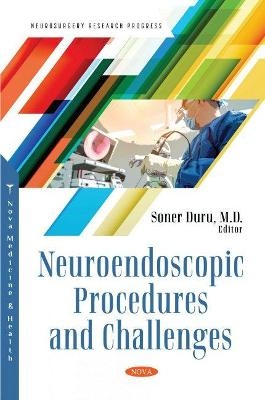
Neuroendoscopic Procedures and Challenges
Seiten
2021
Nova Science Publishers Inc (Verlag)
978-1-68507-092-2 (ISBN)
Nova Science Publishers Inc (Verlag)
978-1-68507-092-2 (ISBN)
In 1910, L'Espinasse performed the first neurosurgical endoscopic procedure for choroid plexus electrocoagulation in an infant with hydrocephalus, by use of a cystoscope. One infant was successfully treated. Walter Dandy used an endoscope to perform an unsuccessful choroid plexectomy in 1922. The next year, Mixter, using a urethroscope, performed the first successful endoscopic third ventriculostomy in a 9-month-old girl with obstructive hydrocephalus. In 1935, Scarff reported his initial results about endoscopic third ventriculostomy using a novel endoscope. His ventriculoscope had an irrigation system to prevent intraventricular collapse and was equipped with a flexible unipolar probe. In 1952, Nulsen and Spitz began the era of ventricular cerebrospinal fluid (CSF) shunting, marking the end of the initial era of neuroendoscopy. This dark period for neuroendoscopy continued until 1970s. However, in this period image capabilities of endoscopes improved with technological developments. In 1978, Vries demonstrated that ETVs were technically feasible using a fiberoptic endoscope to treat patients with hydrocephalus. In 1990, Jones and colleagues described a 50% shunt-free success rate for ETV in 24 patients with various forms of hydrocephalus. Four years later, the same group reported an improved success rate of 61% in a series of 103 patients. Currently, ETV is primarily used to treat obstructive hydrocephalus due to benign aqueductal stenosis or compressive periaqueductal mass lesions. Modern shunt-free success rates range from 80 to 95%. The field of neuroendoscopy has extended beyond ventricular procedures. The endoscope is currently used for all types of neurosurgically treatable diseases such as obstructive hydrocephalus, various intraventricular lesions, hypothalamic hamartomas, craniosynostosis, skull base tumors, and spinal lesions and rare subtypes of hydrocephalus. With the evolution of surgical techniques, endoscopy has emerged as a suitable alternative to many instances of more invasive methods. Surgeons using a neuroendoscope can perform many complex operations through very small incisions. Nowadays, neurosurgeons prefer neuroendoscopic surgery for many different lesions because of less damage to healthy tissue, low complication rate and excellent results. Neuroendoscopic surgery is a specialty within neurosurgery and requires a neurosurgeon to undergo specialized training. In this book, we focused on neuroendoscopic procedures and challenges. We have created this book with the hope that it can be a guide for neurosurgeons who are interested in neuroendoscopic interventions.
Soner Duru, MD Professor of Neurosurgery, Cincinnati, OH, USA
Preface; Acknowledgement; The Evolution of Sympathetic Ablations from Open into Endoscopic Approaches: The Merits and Drawbacks; How to Manage Isolated Fourth Ventricle Syndrome?; Radiological Evaluation of the Stoma Patency in Intraventricular Fenestrations; Endoscopic Endonasal Approach for Skull Base Pathologies in Children; EndoscopeAssisted Microsurgery of Pediatric Brain Tumors; Suprasellar Arachnoid Cysts: Retrospective Series and Literature Review; Neuroendoscopic Challenges in the Treatment of Ventricular Tumors; Index.
| Erscheinungsdatum | 01.10.2021 |
|---|---|
| Sprache | englisch |
| Gewicht | 276 g |
| Themenwelt | Medizinische Fachgebiete ► Chirurgie ► Neurochirurgie |
| Naturwissenschaften ► Biologie ► Humanbiologie | |
| Naturwissenschaften ► Biologie ► Zoologie | |
| ISBN-10 | 1-68507-092-2 / 1685070922 |
| ISBN-13 | 978-1-68507-092-2 / 9781685070922 |
| Zustand | Neuware |
| Informationen gemäß Produktsicherheitsverordnung (GPSR) | |
| Haben Sie eine Frage zum Produkt? |
Mehr entdecken
aus dem Bereich
aus dem Bereich
Buch | Hardcover (2024)
De Gruyter (Verlag)
CHF 153,90
850 Fakten für die Zusatzbezeichnung
Buch | Softcover (2022)
Springer (Verlag)
CHF 65,80
Buch | Hardcover (2023)
Springer (Verlag)
CHF 307,95


